Ministry of Interior (Bulgaria)
The Ministry of Interior (Bulgarian: Mинистерство на вътрешните работи, Ministerstvo na vutreshnite raboti, abbreviated МВР, MVR) of the Republic of Bulgaria is the ministry charged with the national security and the upholding of law and order in the country.
| Mинистерство на вътрешните работи | |
 Ministry of Internal Affairs building in Sofia | |
| Agency overview | |
|---|---|
| Formed | 1879 |
| Jurisdiction | Bulgaria |
| Agency executive |
|
| Parent agency | Council of Ministers |
| Website | http://www.mvr.bg/en |
The ministry was established in 1879 under Knyaz Alexander of Battenberg with the first prime minister and interior minister of what was then the autonomous Principality of Bulgaria being Todor Burmov.
The current Minister of Interior in the third cabinet of Boyko Borisov III is Mladen Marinov, who previously served as the chief of the Sofia police department (SDVR) and as Chief Secretary of the Ministry.
Border Troops
In the 1980s, the Border Troops (Гранични войски) were a paramilitary formation under the Interior Ministry tasked with guarding Bulgaria's borders. Heavily concentrated on Bulgaria's iron curtain border with NATO members Greece and Turkey[1] the Border Troops would have come under the Ministry of People's Defence in times of war. However, the frontier with Romania was also actively defended. After the Cold War the border troops were reformed as the Border Police.
Until 1946 the Bulgarian border guard was a task of the regular army and each infantry regiment in proximity of the border had a border guard company.[2] In 1946 the new Communist regime formed an independent service, dedicated to the border security on August 10, 1946 as the Border Militsiya, but this name lasted only until October 8, when it was renamed to Border Troops. The service initially numbered 8 Border Sectors (Гранични сектори (ГС)). The service was modeled on the Soviet Border Troops. Unlike them the Bulgarian Border Troops were not part of the State Security service, but subordinated to the Ministry of the Interior (between 1962 and 1972 to the Ministry of People's Defence). The internal structure of the troops was overhauled with ministerial order #44 from March 9, 1950 as follows:
- the highest formations (the Border Sectors) were renamed into Border Detachments (Гранични Отряди (ГО), an equivalent of a motorised rifle regiment in the army, but with a smaller manpower, and increased from 8 to 10)
- the battalion equivalents were renamed from Border Sections to Border Commandatures (Гранични Комендатури (ГК))
- the company equivalents were renamed from Border Subsections to Border Outposts (Гранични Застави (ГЗ))
As a military formation each Border Detachment had its Command, Staff and supporting units. The number of the detachments varied through the Communist Era from 8 sectors at the formation of the Border Troops, to 10 in 1950 and 17 at the height of the service's build-up, to 12 in 1989, of which 1 was a training formation. The organization of the Border Troops, as published by the Committee for Disclosing the Documents and Announcing Affiliation of Bulgarian Citizens to the State Security and Intelligence Services of the Bulgarian People's Army (A public commission, authorised by law of the Parliament to study the repressive apparatus of the Communist regime and to establish the connection of individuals to it[3]) in a collection book of declassified documents, was as follows:[4]
Directorate of the Border Troops (Управление на Гранични войски (УГВ))
- Headquarters (Щаб, with 11 departments, such as Operations; Combat Training; Communications; Engineering etc.)
- Intelligence Section (Разузнавателно отделение (РО))
- Intelligence Desk (Разузнаване (Р))
- Counter-Intelligence Desk (Контраразузнаване (К))
- Political Section (Политическо отделение (ПО), with 8 departments, such as Political Education; Editorial of the Border Troops official magazine; Technical Editorial; Library etc.)
- Rear (Тил, logistical services, 5 departments)
- Training Border Detachment (Учебен Граничен Отряд (УГО)) (Ivaylovgrad, former 18th Border Detachment)
- Sergeant School for Working Dog Handlers (Сержантска школа за инструктори на служебни кучета (СШИСК) (Berkovitsa)
- Supply and Support Battalion (Батальон за Обслужване и Осигуряване (БОО))
- Border Detachments:
- 1st Border Detachment - Vidin (1ви Граничен Отряд – Видин (1 ГО))
- including a Border Ships Division (Дивизион Гранични Кораби) for patrols on the Danube river
- 2nd Border Detachment - Dragoman (2ри Граничен Отряд – Драгоман (2 ГО))
- 11th Border Detachment - Kyustendil (11ти Граничен Отряд – Кюстендил (11 ГО))
- 3rd Border Detachment - Petrich (3ти Граничен Отряд – Петрич (3 ГО))
- 6th Border Detachment - Gotse Delchev (6ти Граничен Отряд – Гоце Делчев (16 ГО))
- 4th Border Detachment - Smolyan (4ти Граничен Отряд – Смолян (4 ГО))
- 5th Border Detachment - Momchilgrad (5ти Граничен Отряд – Момчилград (5 ГО))
- 13th Border Detachment - Lyubimets (13ти Граничен Отряд – Любимец (13 ГО))
- 6th Border Detachment - Elhovo (6ти Граничен Отряд – Елхово (6 ГО))
- 7th Border Detachment - Malko Tarnovo (7ми Граничен Отряд – Малко Търново (7 ГО))
- 8th Border Detachment - Burgas (8ми Граничен Отряд – Бургас (8 ГО))
- including a Border Ships Division (Дивизион Гранични Кораби) for patrols on the Bulgarian Black Sea coastline
- 1st Border Detachment - Vidin (1ви Граничен Отряд – Видин (1 ГО))
The border guards were conscripts, which underwent their training at the border detachment they were assigned to. After that those, who have displayed higher skills in the training process were sent to the Training Border Detachment for an NCO course. Of them small numbers were selected for training as working dog handlers at the K-9 Sergeant School. The officer candidates of the Border Troops studied at the Ground Forces Combined Arms Higher School in Veliko Tarnovo and the career development of Border Troops officers was carried out through courses at the Military Academy in Sofia and training institutes of the Soviet Border Troops in the Soviet Union.
Interior Troops
The Interior Troops (Bulgarian: Вътрешни Войски (ВВ)) did not exist throughout the whole period of Communist rule in Bulgaria. They were formed during two distinct periods in the presence of a signifficant organized paramilitary force in opposition to the regime. The first such threat was the Goryani movement. In a report to the Central Committee of the Bulgarian Communist Party dated from October 12, 1948 the at the time Minister of the Interior Anton Yugov informs that for combating the anti-communist partizans 13 special combat units with 1 350 men in total have been formed. He brings to the attention of the Committee, that due to their composition of regular Militsioners, family men in their mid-30s and older, a rising tension and physical strain has been observed because of the long periods of patrolling and fighting in the mountains where the Goryanes were active. For that reason Yugov suggests that a specialized Interior Troops arm should be formed in order to facilitate the utilization of conscripts for the Ministry of the Interior with the same conditions of military service as the conscripts of the Bulgarian Army, but trained in the specific counter-insurgency skills needed for such operations. In his report the minister suggests that initially about 1 000 conscripts should be trained by the 13 special combat units in order to relieve their personnel, after which additional 3 000 should be inducted to boost their numbers, with the corresponding reduction in manpower of the regular Militsiya by 3 000 men.[5] Later the numbers of the IT increased to a division and even after the Goryani movement was destroyed their build-up continued to over 12 000 in two divisions and two specialized brigades with their own tanks, artillery, AAA, combat engineers etc., before their abrupt disbandment in 1961.
The second installment of the Bulgarian Interior Troops is from 1985 in connection to the Revival Process. A wave of terror attacks in the first half of the 1980s, including a bomb attack on a special passenger train coach for mothers traveling with little children on March 9, 1985 at Bunovo railway station,[6] organized by the Turkish National-Liberation Movement terror organization, called for the re-establishment of a dedicated counter-insurgency paramilitary force in the structure of the Ministry of the Interior, to deal with the internal terror threat in cooperation with the State Security (Държавна Сигурност (ДС)) and the People's Militsiya (Народна Милиция (НМ)). The Interior Troops were tasked with counter-insurgency in mountainous and woodland terrain, riot control and security of locations of particular and strategic importance. The force was reinstated in 1985 and at the Boyana Roundtable Conference in the first half of 1990 convened between the Bulgarian Communist Party (recently renamed to Bulgarian Socialist Party) and the Union of Democratic Forces to reach an agreement about the reform of the country in light of radical changes in Eastern Europe it was publicly made clear (in response to a question about that), that the Interior Troops number 2 000 men in 6 battalions, plus the SOBT.[7] The latter however is incorrect. The Specialized Counter-Terrorism Force (abbreviated SOBT in Bulgarian) has from its formation to present day (2017) been the premier counter-terrorism unit of the country, strategically subordinated directly to the Minister of the Interior as an independent agency in its own right. The confusion comes from the fact, that a security regiment of the IT has been based in Vranya, near the former Vrana Palace in barracks recently vacated by the State Security's Fifth Department (Department for Safety and Protection) (Пето управление (Управление за безопасност и охрана (УБО)), the higher state functionaries' close protection service. Since the abolition of the Bulgarian monarchy the palace has been turned into an official residence with permanent presence from the Ministry of the Interior. The battalion in question was the quick reaction paramilitary force for the capital Sofia. In fact the Vranya Battalion and the SOBT are located in adjacent barracks, which causes the confusion. The Interior Troops battalions were organised as rifle battalions with BTR-60s, trucks, automatic rifles, machine guns, mortars and anti-tank rockets. In 1990-91 the Border and the Interior Troops were amalgamated into the Troops of the Ministry of the Interior (Войски на МВР), then separated again. In 1993 the Interior Troops were renamed into Gendarmery, the traditional name from the time of the monarchy, banned after that for their role in hunting down communist partizans. Recently the Gendarmery has been absorbed into the Ministry of the Interior's Main Directorate "National Police" and as of 2017 the former Interior Troops and Gendarmery after that exist in the form of Specialized Police Forces (Специализирани Полицейски Сили) within the National Police. In 1989 they consisted of:
- Interior Troops Directorate (Управление "Вътрешни войски") (Sofia) (Detachment 72300)
- 1st Independent Operational Security Regiment (1ви Самостоятелен Оперативно-охранителен Полк) (Vrana Palace, Sofia) (Detachment 72345 (44270 before the establishment of the IT))
- 1st Independent Operational Battalion (1ви Самостоятелен Оперативен Батальон) (Kardzhali) (Detachment 72350)
- 2nd Independent Operational Battalion (2ри Самостоятелен Оперативен Батальон) (Razgrad) (Detachment 72355)
- 3rd Independent Operational Battalion (3ти Самостоятелен Оперативен Батальон) (Dzhebel) (Detachment 72360)
- 4th Independent Operational Battalion (4ти Самостоятелен Оперативен Батальон) (Novi Pazar) (Detachment 72365)
- 5th Independent Operational Battalion (5ти Самостоятелен Оперативен Батальон) (Brezovo) (Detachment 72370)
- 6th Independent Operational Battalion (6ти Самостоятелен Оперативен Батальон) (Burgas) (Detachment 72375)
Organisation
The Ministry is headed by the Minister of Interior Affairs. The position is considered a power appointment and in the modern Bulgarian history (both during the Socialist period and in the post-1989 democratic period) the Minister is also a Deputy Prime Minister. The Deputy Ministers and a Parliament Secretary form his Political Cabinet along with the Chief of the Political Cabinet.
The professional head of the Ministry's operational agencies is the Chief Secretary of the Ministry of Interior (Bulgarian: Главен секретар на МВР). This is simultaneously a position and the highest officer rank within the Ministry. The role and rank of the Chief Secretary is similar to those of the Chief of Defence within the Bulgarian Ministry of Defence. Three times (and current as of 2019) Prime Minister Boyko Borisov has started his political career after his tenure as Chief Secretary. The head of the Ministry's civil servants is the Administrative Secretary of the Ministry of Interior (Bulgarian: Административен секретар на МВР), responsible for human resources, budget planning, real estates of the Ministry, public relations etc. The rest of organisations within the Ministry (the Academy, the Medical Service, the Scientific Studies Institute of Criminology, the Institute of Psychology, the CIS Directorate, internal affairs, financial comptrollers, international cooperation etc.) are directly subordinated to the Minister.
Bulgaria is a unitary state composed of 28 provinces - the capital city of Sofia (an oblast in its own right) and 27 oblasts. The agencies within the Ministry (called Main Directorates and Directorates) are organised at national level under the Chief Secretary. There is also an Oblast Directorate of the Ministry of Interior Affairs (abbreviated ODMVR and followed by the name of the province) within each of the provinces (called oblasts). The only exception is the city of Sofia. Due to its status as the nation's capital, economic powerhouse, most highly and densely populated city and for traditional reasons the Sofia equivalent of the 27 ODMVRs is actually called SDVR, which stands for Capital Directorate for Interior Affairs. These regional departments are also ultimately subordinated to the Chief Secretary. The 27 ODMVRs range in manpower from about 400 (of ODMVR Silistra) to a little over 1 900 (of ODMVR Plovdiv) police officers and civil servants. They are dwarfed by the SDVR of the capital Sofia with its almost 5 100 police officers and civil servants (the ODMVR Sofia, which covers the province around, but excluding the city itself, counts a total of 1 030).
Main Directorate of Gendarmerie, Special Operations and Counter-Terror
A 2020 reform plan of the government called for the integration of the Ministry's primary counter-terror unit - the SOBT and the Gendarmerie Directorate into a new Main Directorate of Gendarmerie, Special Operations and Counter-Terror (Главна дирекция жандармерия, специални операции и борба с тероризма" - ГДЖСОБТ)[8][9] (in a manner similar to the amalgamation of the French Gendarmerie's GIGN and territorial quick reaction units). The plan has encountered serious criticism from within and without the Ministry of the Interior, political parties and security, public order and counter-terror experts. Major reason for concern is the view, that this action is politically motivated. Bulgaria is a parliamentary republic and the Cabinet of Ministers is the executive power in the country. The security of all high ranking state officials of the legislature, executive and judiciary however was the exclusive jurisdiction of the National Close Protection Service. The NCPS is an agency subordinated to the Office of the President of the Republic of Bulgaria. In the Bulgarian political structure the President is not part of the executive and this is a source of ever present tension between him and the incumbent Prime Minister. In the middle of 2020 the Chief Public Prosecutor Ivan Geshev (by Constitution the Bulgarian State Prosecution is part of the legislature) broke the NCPS monopoly by waiving his protection detail by the service and forming a new one under the Protection Bureau (Бюро за охрана).[10] The Bureau of less than a hundred employees acts as a witness protection service under direct subordination to the Main Prosecution (Главна прокуратура, the Office of the Chief Public Prosecutor). At the same time the parliamentary faction of the main ruling party motioned through parliament the project for the new agency with the significant addition of close protection of high ranking state officials to the missions already assigned to the SFCT and the Gendarmerie.[11] The reform project passed through Parliament in the end of 2020 and took effect on January 1, 2021.
Specialised Force for Combating Terrorism
The SOBT (Bulgarian: Специализиран отряд за Борба с тероризма, СОБТ) is the country's premier counter-terror unit. It consists of roughly 150 operatives and staff and support personnel. It is located near the former royal residence in the Vrana area at the outskirts of the capital Sofia. The Force is directly subordinated to the Minister and engages in the most complicated cases. Most of the other agencies within the ministry have their own SWAT teams and the occasions in which the SOBT has been deployed in operations have decreased in the 21st century. The Force trains regularly with the special forces of the Bulgarian Army, the SWAT teams of the Sofia Police Department (SDVR), the Main Directorate "Combat Against The Organised Crime" (GDBOP), the Gendarmery, the Border Police and teams of the Attorney General's Office, as well as similar foreign CT units, such as the French RAID, the German GSG 9 etc.
Directorate “Gendarmery”
The Gendarmery Directorate is the main militarised arm for riot control, security of critical infrastructure of national importance, such as nuclear power plants, ports, pipelines, foreign embassies and diplomatic missions in the Republic of Bulgaria. The National Police is organised in central departments under the Main Directorate in Sofia and 28 provincial departments. The Gendarmery does not follow that model, instead it is organised in a small central apparatus and 8 Zonal Gendarmery Departments, covering multiple provinces. Unlike classic examples such as the French Gendarmerie nationale, the Italian Carabinieri, the Turkish Jandarma or the Dutch Koninklijke Marechaussee the Bulgarian Gendarmery has no task to enforce military discipline in the Armed Forces. This is the jurisdiction of the Military Police Service under the Bulgarian Ministry of Defence.
- Director of Gendarmery
- services directly subordinated to the Director
- Zonal Gendarmery Department Sofia
- Zonal Gendarmery Department Montana
- Zonal Gendarmery Department Pleven
- Zonal Gendarmery Department Gorna Oryahovitsa
- Zonal Gendarmery Department Varna
- Zonal Gendarmery Department Burgas
- Zonal Gendarmery Department Plovdiv
- Zonal Gendarmery Department Kardzhali
Main Directorate "National Police"
The Main Directorate "National Police" (Bulgarian: Главна дирекция "Национална полиция", ГДНП) is the nations's primary law enforcement organisation. It includes various services, such as Security Police, Criminal Police, Transport Police, Traffic Police etc. It also included the Gendarmery Directorate until January 1, 2021.
- Director of MDNP
- "Criminal Contingent and Prevention" Sector
- "Operational Analysis Centre" Sector
- "Expert-Criminalistic Activities" Sector
- Deputy Director of MDNP in charge of
- Criminal Police
- Economic Police
- Deputy Director of MDNP in charge of
- Investigative Department
- Department for Methodic Guidance of Investigations
- Deputy Director of MDNP in charge of
- Security Police
- Traffic Police
Main Directorate "Combat Against The Organised Crime"
The Main Directorate is tasked with the prevention of serious crimes such as drug trafficking, human trafficking, abductions etc. Due to its purpose it is also colloquially known as the anti-Mafia service.
Main Directorate "Border Police"
The Main Directorate "Border Police" is responsible for the security of the border crossings and the prevention of illegal entering of the territory of the Republic of Bulgaria. The service does not carry law enforcement tasks in the interior of the country, however, operating highly sophisticated land-based surveillance equipment, helicopters and sea and riverine patrol craft, the Border Police is regularly engaged in search and rescue operations for missing persons and pursuit of dangerous criminals in a supporting capacity.
- Director of Border Police
- services directly subordinated to the Director
- Regional Directorate "Border Police" - Airports (Sofia)
- Border Police HQ Sofia IAP
- Border Police HQ Plovdiv IAP
- Border Police HQ Varna IAP
- Border Police HQ Burgas IAP
- Regional Directorate "Border Police" - Ruse
- Border Police Ships Base - Vidin
- Regional Directorate "Border Police" - Burgas
- Border Police Ships Base - Sozopol
- Regional Directorate "Border Police" - Elhovo
- Regional Directorate "Border Police" - Smolyan
- Regional Directorate "Border Police" - Kyustendil
- Regional Directorate "Border Police" - Dragoman
- Specialised Aerial Surveillance Unit (Sofia IAP)
- Sofia (Aviation) Base - 1 x AgustaWestland AW139, 3 x AgustaWestland AW109P
- Bezmer (Aviation) Base - helicopters on temporary deployment from Sofia Base
Main Directorate "Fire Safety and Civil Protection"
The Main Directorate (Bulgarian: Главна дирекция "Пожарна безопасност и защита на населението") is responsible for fire-fighting, reaction to natural disasters, emergency situations and rescue operations. The Civil Protection portfolio was for a long time under the Ministry of Defence. The Stanishev Government has combined the MIA's fire-fighting service, the MoD's civil protection service and the wartime stocks agency of the Council of Ministers into a new "mega" Ministry of Emergency Situations. The new ministry was later dissolved, with the fire fighters returning under the MIA and the wartime stocks administration returning to the oversight of the Council of Ministers. Civil Protection was retained merged with the Fire Protection Service and joined the MIA. The Main Directorate consists of departments directly under the DIrector of the service and 28 territorial departments (the Capital Directorate for Fire Safety and Civil Protection in Sofia and 27 Regional Directorates for Fire Safety and Civil Protection
in each of the 27 oblasts).
List of ministers
| No. | Name (Birth–Death) |
Portrait | Took office | Left office | Political party |
|---|---|---|---|---|---|
| Ministers of Interior (1879–1912) | |||||
| 1 | Todor Burmov (1834–1906) | 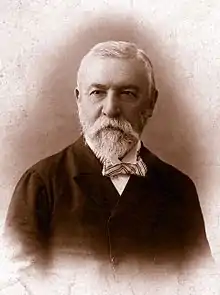 | 17 July 1879 | 6 December 1879 | Conservative Party |
| 2 | Dimitar Grekov (1847–1901) |  | 6 December 1879 | 11 December 1879 | Conservative Party |
| 3 | Vladimir Rogge (1843–1906) |  | 11 December 1879 | 31 January 1880 | Non-party |
| 4 | Todor Ikonomov (1835–1892) |  | 31 January 1880 | 7 April 1880 | Conservative Party |
| 5 | Georgi Tishev (1848–1926) |  | 7 April 1880 | 10 December 1880 | Liberal Party |
| 6 | Dragan Tsankov (1828–1911) | 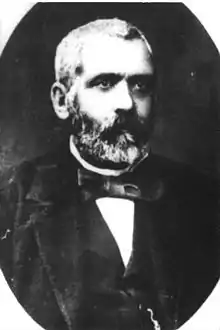 | 10 December 1880 | 29 December 1880 | Liberal Party |
| 7 | Petko Slaveykov (1827–1895) |  | 29 December 1880 | 9 May 1881 | Liberal Party |
| 8 | Johann Casimir Ehrnrooth (1833–1913) |  | 9 May 1881 | 13 July 1881 | Imperial Russian Army |
| 9 | Arnold Remlingen (1841–1900) |  | 13 July 1881 | 12 January 1882 | Imperial Russian Army |
| 10 | Grigor Nachovich (1845–1920) | 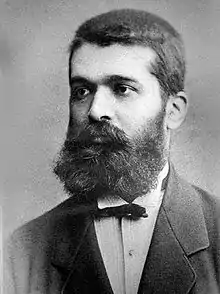 | 12 January 1882 | 5 July 1882 | Conservative Party |
| 11 | Leonid Sobolev (1844–1913) |  | 5 July 1882 | 16 April 1883 | Imperial Russian Army |
| 12 | Nestor Markov (1836–1916) |  | 16 April 1883 | 15 August 1883 | Non-party |
| (11) | Leonid Sobolev (1844–1913) (2nd time) |  | 15 August 1883 | 19 September 1883 | Imperial Russian Army |
| (6) | Dragan Tsankov (1828–1911) (2nd time) |  | 19 September 1883 | 11 July 1884 | Progressive Liberal Party |
| (7) | Petko Slaveykov (1827–1895) (2nd time) |  | 11 July 1884 | 12 February 1885 | Liberal Party |
| 13 | Nikola Suknarov (1849–1894) |  | 12 February 1885 | 2 April 1885 | Liberal Party |
| 14 | Petko Karavelov (1843–1903) |  | 2 April 1885 | 21 August 1886 | Liberal Party |
| (6) | Dragan Tsankov (1828–1911) (3rd time) |  | 21 August 1886 | 24 August 1886 | Progressive Liberal Party |
| 15 | Vasil Radoslavov (1854–1929) |  | 24 August 1886 | 10 July 1887 | Liberal Party (Radoslavists) |
| 16 | Georgi Stranski (1847–1904) | 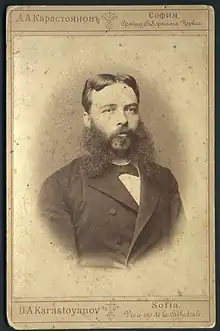 | 10 July 1887 | 1 September 1887 | People's Liberal Party |
| 17 | Stefan Stambolov (1854–1895) |  | 1 September 1887 | 31 May 1894 | People's Liberal Party |
| 18 | Konstantin Stoilov (1853–1901) | 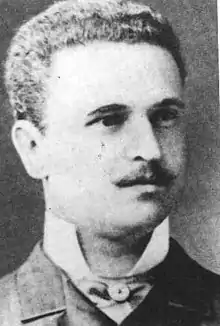 | 31 May 1894 | 13 November 1896 | People's Party |
| 19 | Nayden Benev (1857–1909) |  | 13 November 1896 | 30 January 1899 | People's Party |
| (15) | Vasil Radoslavov (1854–1929) (3rd time) |  | 30 January 1899 | 10 December 1900 | Liberal Party (Radoslavists) |
| 20 | Racho Petrov (1861–1942) | 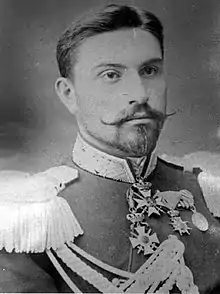 | 10 December 1900 | 4 March 1901 | Non-party |
| 21 | Mihail Sarafov (1854–1924) |  | 4 March 1901 | 22 March 1902 | Progressive Liberal Party |
| 22 | Aleksandar Lyudskanov (1854–1922) |  | 22 March 1902 | 18 May 1903 | Progressive Liberal Party |
| 23 | Dimitar Petkov (1858–1907) |  | 18 May 1903 | 11 March 1907 | People's Liberal Party |
| 24 | Nikola Genadiev (1868–1923) |  | 11 March 1907 | 16 March 1907 | People's Liberal Party |
| 25 | Petar Gudev (1862–1932) | 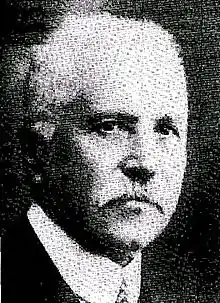 | 16 March 1907 | 29 January 1908 | People's Liberal Party |
| 26 | Mihail Takev (1864–1920) |  | 29 January 1908 | 18 September 1910 | Democratic Party |
| 27 | Nikola Mushanov (1872–1951) | 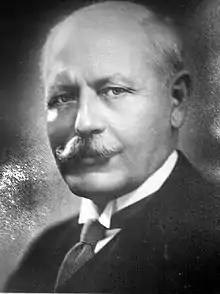 | 18 September 1910 | 29 March 1911 | Democratic Party |
| (22) | Aleksandar Lyudskanov (1854–1922) (2nd time) |  | 29 March 1911 | 14 January 1912 | Progressive Liberal Party |
| Ministers of Interior and Public Health (1912–1946) | |||||
| (22) | Aleksandar Lyudskanov (1854–1922) (2nd time) |  | 14 January 1912 | 14 June 1913 | Progressive Liberal Party |
| 28 | Mihail Madzarov (1854–1944) |  | 14 June 1913 | 17 July 1913 | People's Party |
| (15) | Vasil Radoslavov (1854–1929) (4th time) |  | 17 July 1913 | 4 October 1915 | Liberal Party (Radoslavists) |
| 29 | Hristo Popov (1858–1951) |  | 4 October 1915 | 7 September 1916 | Liberal Party (Radoslavists) |
| (15) | Vasil Radoslavov (1854–1929) (5th time) |  | 7 September 1916 | 21 June 1918 | Liberal Party (Radoslavists) |
| (26) | Mihail Takev (1864–1920) (2nd time) |  | 21 June 1918 | 28 November 1918 | Democratic Party |
| (27) | Nikola Mushanov (1872–1951) (2nd time) |  | 28 November 1918 | 7 May 1919 | Democratic Party |
| 30 | Krastyu Pastuhov (1874–1949) |  | 7 May 1919 | 6 October 1919 | Bulgarian Social Democratic Workers Party (Broad Socialists) |
| 31 | Aleksandar Dimitrov (1878–1921) |  | 6 October 1919 | 24 June 1921 | Bulgarian Agrarian National Union |
| 32 | Konstantin Tomov (1888–1935) |  | 24 June 1921 | 9 November 1921 | Bulgarian Agrarian National Union |
| 33 | Aleksandar Radolov (1883–1945) |  | 9 November 1921 | 5 January 1922 | Bulgarian Agrarian National Union |
| 34 | Rayko Daskalov (1886–1923) | 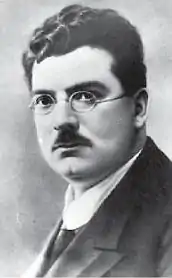 | 5 January 1922 | 9 February 1923 | Bulgarian Agrarian National Union |
| 35 | Aleksandar Obbov (1887–1975) |  | 9 February 1923 | 12 March 1923 | Bulgarian Agrarian National Union |
| 36 | Hristo Stoyanov (1892–1970) |  | 12 March 1923 | 9 June 1923 | Bulgarian Agrarian National Union |
| 37 | Ivan Rusev (1872–1945) |  | 9 June 1923 | 4 January 1926 | Democratic Alliance |
| 38 | Andrey Lyapchev (1866–1933) |  | 4 January 1926 | 29 June 1931 | Democratic Alliance |
| (27) | Nikola Mushanov (1872–1951) (3rd time) |  | 29 June 1931 | 12 October 1931 | Democratic Party |
| 39 | Aleksandar Girginov (1879–1953) |  | 12 October 1931 | 19 May 1934 | Democratic Party |
| 40 | Petar Midilev (1875–1939) |  | 19 May 1934 | 22 January 1935 | Zveno |
| 41 | Krum Kolev (1890–1970) |  | 22 January 1935 | 21 April 1935 | Bulgarian Army |
| 42 | Rashko Atanasov (1884–1945) |  | 21 April 1935 | 23 November 1935 | Non-party |
| 43 | Georgi Sapov (1873–?) |  | 23 November 1935 | 4 July 1936 | Non-party |
| 44 | Ivan Krasnovski (1882–1941) |  | 4 July 1936 | 24 January 1938 | Non-party |
| 45 | Nikolay Nikolaev (1887–1961) |  | 24 January 1938 | 14 November 1938 | Non-party |
| 46 | Nikola Nedev (1886–1970) |  | 14 November 1938 | 15 February 1940 | Non-party |
| 47 | Petar Gabrovski (1898–1945) |  | 15 February 1940 | 14 September 1943 | Non-party |
| 48 | Docho Hristov (1895–1945) |  | 14 September 1943 | 1 June 1944 | Non-party |
| 49 | Aleksandar Stanishev (1886–1945) |  | 1 June 1944 | 2 September 1944 | Non-party |
| 50 | Vergil Dimov (1901–1979) |  | 2 September 1944 | 9 September 1944 | Bulgarian Agrarian National Union |
| 51 | Anton Yugov (1904–1991) | 9 September 1944 | 22 November 1946 | Bulgarian Communist Party | |
| Ministers of Interior (1946–1968) | |||||
| 51 | Anton Yugov (1904–1991) | 22 November 1946 | 6 August 1949 | Bulgarian Communist Party | |
| 52 | Rusi Hrizostov (1914–1990) |  | 6 August 1949 | 6 January 1951 | Bulgarian Communist Party |
| 53 | Georgi Tsankov (1913–1990) |  | 6 January 1951 | 17 March 1962 | Bulgarian Communist Party |
| 54 | Diko Dikov (1910–1985) |  | 17 March 1962 | 27 December 1968 | Bulgarian Communist Party |
| Minister of Interior and State Security (1968–1969) | |||||
| 55 | Angel Solakov (1922–1998) |  | 27 December 1968 | 27 February 1969 | Bulgarian Communist Party |
| Ministers of Interior (1969–Present) | |||||
| 55 | Angel Solakov (1922–1998) |  | 27 February 1969 | 9 July 1971 | Bulgarian Communist Party |
| 56 | Angel Tsanev (1912–2003) |  | 9 July 1971 | 7 June 1973 | Bulgarian Communist Party |
| 57 | Dimitar Stoyanov (1928–1999) |  | 7 June 1973 | 19 December 1988 | Bulgarian Communist Party |
| 58 | Georgi Tanev (1943– ) |  | 19 December 1988 | 27 December 1989 | Bulgarian Communist Party |
| 59 | Atanas Semerdzhiev (1924–2015) |  | 27 December 1989 | 2 August 1990 | Bulgarian Communist Party |
| 60 | Stoyan Stoyanov (1945– ) |  | 2 August 1990 | 5 September 1990 | Bulgarian Socialist Party |
| 61 | Pencho Penev (1947– ) |  | 5 September 1990 | 20 December 1990 | Bulgarian Socialist Party |
| 62 | Hristo Danov (1922–2003) |  | 20 December 1990 | 8 November 1991 | Non-party |
| 63 | Yordan Sokolov (1933–2016) |  | 8 November 1991 | 30 December 1992 | Union of Democratic Forces |
| 64 | Viktor Mihaylov (1944– ) |  | 30 December 1992 | 17 October 1994 | Non-party |
| 65 | Chavdar Chervenkov (1949– ) |  | 17 October 1994 | 26 January 1995 | Non-party |
| 66 | Lyubomir Nachev (1954–2006) |  | 26 January 1995 | 10 May 1996 | Bulgarian Socialist Party |
| 67 | Nikolay Dobrev (1947–1999) |  | 10 May 1996 | 12 February 1997 | Bulgarian Socialist Party |
| 68 | Bogomil Bonev (1957– ) |  | 12 February 1997 | 21 December 1999 | Union of Democratic Forces |
| 69 | Emanuil Yordanov (1960– ) |  | 21 December 1999 | 24 July 2001 | Union of Democratic Forces |
| 70 | Georgi Petkanov (1966– ) |  | 24 July 2001 | 17 August 2005 | National Movement Simeon II |
| 71 | Rumen Petkov (1961– ) |  | 17 August 2005 | 24 April 2008 | Bulgarian Socialist Party |
| 72 | Mihail Mikov (1960– ) |  | 24 April 2008 | 27 July 2009 | Bulgarian Socialist Party |
| 73 | Tsvetan Tsvetanov (1965– ) |  | 27 July 2009 | 13 March 2013 | GERB |
| 74 | Petya Parvanova (1960– ) | 13 March 2013 | 29 May 2013 | Non-party | |
| 75 | Tsvetlin Yovchev (1964– ) |  | 29 May 2013 | 6 August 2014 | Bulgarian Socialist Party |
| 76 | Yordan Bakalov (1960– ) |  | 6 August 2014 | 7 November 2014 | Non-party |
| 77 | Veselin Vuchkov (1968– ) |  | 7 November 2014 | 11 March 2015 | GERB |
| 78 | Rumyana Bachvarova (1959–) |  | 11 March 2015 | 27 January 2017 | GERB |
| 80 | Valentin Radev (1958–) |  | 4 May 2017 | 20 September 2018 | GERB |
| 76 | Mladen Marinov (1971–) |  | 20 September 2018 | Non-party | |
References
- William J. Lewis (1982). The Warsaw Pact: Arms, Doctrine, and Strategy. Cambridge, Mass.: Institute for Foreign Policy Analysis/McGraw Hill. p. 135.
- http://armymedia.bg/archives/48619, "Bulgarian Army" newspaper, official publication of the Bulgarian Ministry of Defence
- https://www.comdos.bg/Нашите%20издания/ds-i-granichni-voyski
- Declassified Documents (2015). Държавна Сигурност и Гранични Войски (документален сборник) ("State Security Service and the Border Troops"). Sofia, Bulgaria: БИК - Българска Издателска Компания - БИК АД. p. 1184. ISBN 978-954-2986-48-5.
- Христов, Христо. "МВР и Политбюро създават вътрешни войски за борба срещу горяните". Държавна сигурност.com (in Bulgarian). Retrieved 2017-11-30.
- "30 years since the largest railway assault in Bulgaria". Retrieved 2017-11-30.
- "Decommunization". www.decommunization.org. Retrieved 2017-11-30.
- "Сливат жандармерията с отряда на баретите". www.paragraph22.bg. Retrieved 2020-02-24.
- Digital, Studio X. "Пращат СОБТ под шапката на ГД "Жандармерия"". www.monitor.bg. Retrieved 2020-02-24.
- Capital.bg. "Личната армия на Гешев". www.capital.bg (in Bulgarian). Retrieved 2021-01-03.
- "Предложение на ГЕРБ: Жандармерията и баретите да пазят държавни служители". www.dnevnik.bg (in Bulgarian). Retrieved 2020-02-24.